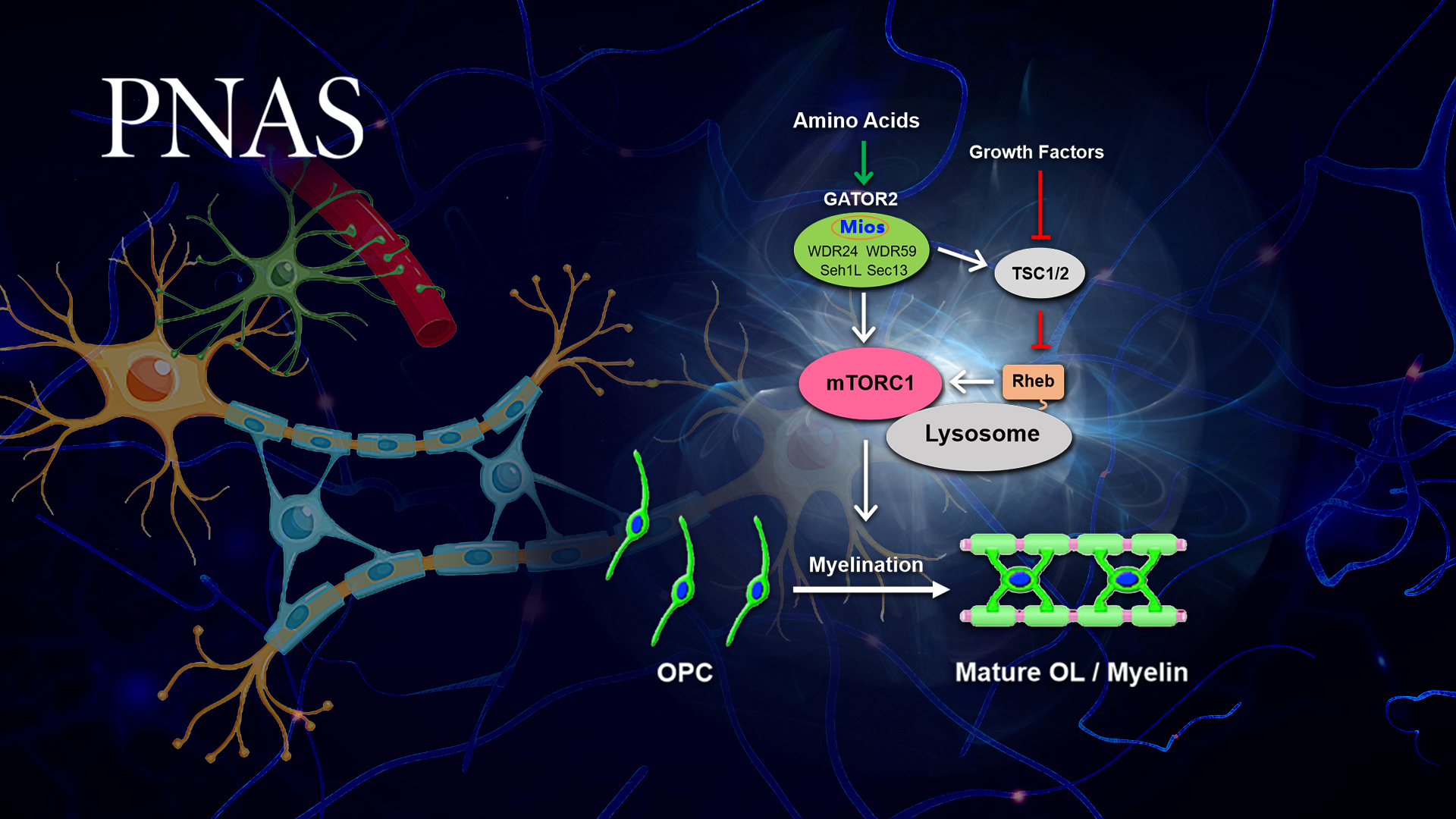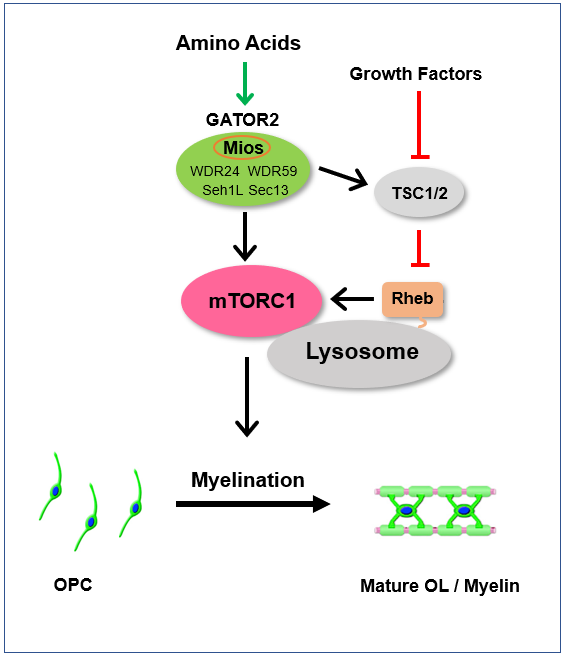Speedy transmission of nerve impulses with energy efficiency along neural networks is critical for the nervous system to do its job. Vertebrates, including human beings, have evolved a smart mechanism to deal with the logistic issue of the transmission of nerve impulses, which is to wrap axons with myelin membrane, aka myelination of axons. In the brain and spinal cord, myelin is formed by a type of neuroglial cell known as oligodendrocytes. How the oligodendrocytes and myelinated axons are formed fascinates scientists and clinicians alike.
Cell growth/division and differentiation are dependent on growth signals provided by the growth factors and amino acids. Therefore, amino acid sensing/signaling of the cells, coordinated with growth factor signaling, is essential for cell/tissue development.

A research team led by Professor Bo Xiao from the School of Life Sciences at the Southern University of Science and Technology (SUSTech) published their recent work in the prestigious journal Proceedings of the National Academy of Sciences of the United States of America (PNAS).
Their research, entitled “GATOR2 complex-mediated amino acid signaling regulates brain myelination”, showed that an amino acid-sensing protein complex known as GATOR2 plays an important role in regulating the formation of oligodendrocytes that myelinate axons in the brain and spinal cord.

GATOR2 is responsible for transducing the signal of amino acid availability to mTORC1 kinase complex inside the cell. Using gene knockout technique, Prof. Xiao’s team disrupted GATOR2 by ablating its critical component – Mios in mouse progenitor cells that give rise to oligodendrocytes.
As a result, the mouse could not produce enough oligodendrocytes that myelinate axons, thus manifesting myelination deficit in the brain. Their previous studies show that mTORC1 kinase is important in controlling oligodendrocyte formation and myelination (Dev Cell, 2011; J Neurosci 2014). This study reveals that disrupting GATOR2 in oligodendrocyte progenitor cells impairs mTORC1 activity. Therefore, it is reasonable to think that impaired mTORC1 is the underlying cause for oligodendrocyte and myelination deficit caused by ablating Mios. However, when mTORC1 activity is artificially restored in oligodendrocyte precursors, oligodendrocyte and myelination deficit remains in the Mios knockout mouse. This finding suggests that Mios/GATOR2-regulated oligodendrocyte biology may involve more than signaling to mTORC1.
Oligodendrocyte biology is also implicated in neurological disorders such as multiple sclerosis and Alzheimer’s disease. The finding that Mios/GATOR2 mediated amino acid signaling regulates oligodendrocyte myelination is a significant advance in basic brain science, with clinical implications.

Figure 1. A model for the role of the Mios/GATOR2 in brain myelination
Zongayn Yu, a Ph.D. student of the joint graduate program between SUSTech and Harbin Institute of Technology (HIT), is the first author of this paper. Prof. Bo Xiao from SUSTech and Prof. Paul Worley from the Johns Hopkins University School of Medicine (JHUSOM), are the corresponding authors.
This work was supported by the Shenzhen Science, Technology and Innovation Commission, the National Natural Science Foundation of China (NSFC), and the Shenzhen–Hong Kong Institute of Brain Science–Shenzhen Fundamental Research Institutions. The researchers would also like to acknowledge the support of the SUSTech Core Research Facilities and the SUSTech Animal Core Facility throughout this study.
Paper link: https://www.pnas.org/content/119/3/e2110917119
To read all stories about SUSTech science, subscribe to the monthly SUSTech Newsletter.
Proofread ByAdrian Cremin, Yingying XIA
Photo By